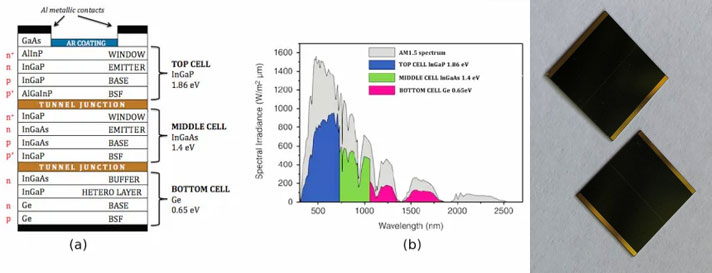Researchers at the National Renewable Energy Laboratory (NREL) of the U.S. Department of energy recently developed a six junction III-V solar cell. Under 1-sun light intensity, the cell conversion efficiency can reach 39.2%, while under 143 suns light intensity, the cell conversion efficiency can reach 47.1%.
The cell consists of six photosensitive layers made of III – V semiconductor alloy, each of which can capture light from a specific part of the solar spectrum. The researchers said that although the various materials of the cell add up to about 140 layers, it is actually only one-third of the thickness of human hair. The report also shows that if the series resistance is further reduced in the structure, the actual efficiency can even exceed 50%.

To develop this multi junction cell, it is very difficult to minimize the atomic arrangement dislocations in the lattice mismatched III-V alloy, prevent the phase segregation in the metastable III-V alloy, and understand the diffusion of dopants in complex structures.
In June last year, NREL researchers also cooperated with scientists from the Korean Institute of advanced science and technology to develop a method to produce gallium arsenide (GaAs) solar cells using reusable germanium substrates.
In the past, NREL cooperated with Chicago based microlink devices to produce three junction cells, with a record conversion efficiency of 37.75%.
III-V compounds are compounds formed by group III B, Al, GA, in and group V n, P, as and Sb in the periodic table of elements, mainly including gallium arsenide (GaAs), indium phosphide (INP) and gallium nitride.
So far, the cost of producing solar cells based on III-V compounds remains high. Therefore, these lightweight and efficient materials are often used in high cutting-edge fields such as UAVs and satellites. Further reducing the cost of such technologies has become the most urgent problem.